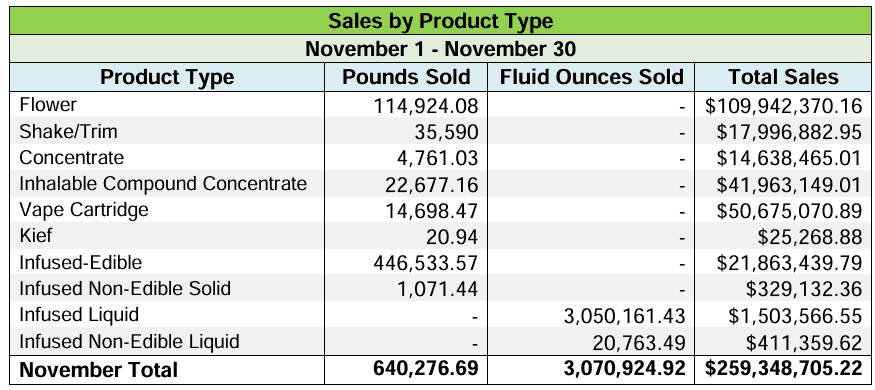COLUMBUS – Despite more than $2 billion in total cannabis sales, the state of Ohio is leaving money on the table. At BeneLeaves’ Ohio-based headquarters, there’s plenty of green to go around, but not the type Bill Williams used to work with.
“I was selling canned vegetables before I came here,” Williams chuckled as he sat in a conference room surrounded by various BeneLeaves goods. “I sold canned vegetables to every single market in the United States.”
Like a veggie medley, Williams’ new product can be colorful, but the health impact is different.
“We get so many emails or comments about the relief that people are getting,” Williams said as a point of pride.
Williams co-founded the cannabis processing facility more than five years ago, and BeneLeaves was one of a few dozen in Ohio that received certificates of operation before recreational marijuana went on sale on Aug. 6.
On the surface, with tens of million in sales reported every month, it looks like business is booming. However, there’s still room to grow.
A slow burn to start
“These markets do take time to ramp up,” Mike Getlin, director of public affairs at Nectar Markets, admitted.
Getlin helps run the national dispensary that has more than 50 stores, including one in Euclid. He claims Ohio pricing is driving customers to spend their hard-earned green across state lines.
“We can’t expect to not hemorrhage sales to Michigan for the foreseeable future,” Getlin confessed.
Ohio is making tens of millions in marijuana sales every month, but the data can be misleading. Numbers show how Ohio’s business has jumped since full adult-use opened up in August, but also reveals how far behind it lags compared to Michigan’s cannabis industry.
“We actually saw an increase in Michigan sales when adult use was authorized (in Ohio) in August,” Getlin told 3News Investigates.
That’s right — the Michigan market actually improved as Ohio’s opened up. Cannabis has created revenue in Ohio, but not nearly as much as it could be.
Experts point to two factors. The first is how growers are allowed to grow.
Ohio does not allow any outdoor marijuana cultivation, meaning cannabis companies pay big bucks to run indoor, climate-controlled facilities. This sends prices to the moon.
“We’re definitely getting great microbrews on the shelves, but we don’t have any Budweiser,” Getlin explained, using an analogy.
“We hear that all the time at the dispensary level, that the prices aren’t as good as they are in Michigan,” Williams agreed.
Williams also points to a second hurdle: product. Ohio is still expanding the types of goods it allows. For now, certain items — like pre-rolled flower — aren’t available.
“Just give us a little more time,” Williams requested, “and we’ll absolutely be able to keep up with those Michigan prices.”
Losing revenue up in smoke
So why should non-cannabis users care? Well, the state’s inefficient roll out could be costing taxpayers major money.
Every sale includes a 10% tax that goes directly toward creating jobs, funding municipal projects, and substance abuse treatment. If the state loses out on tens of millions in sales each month, that hurts everyone’s wallet.
Getlin believes once the tax revenue starts being used to benefit local communities, more areas will fight to host cannabis facilities.
“I think you’re really going to see cities not only appreciating this, but competing to draw in high line dispensaries in the future,” he outlined.
Within the next calendar year, Ohio lawmakers could operate and regulate the industry differently, leading to better pricing and profit. Operational decisions like allowing for outdoor growth and expanding the available inventory are changes that can be made through votes at the state capitol.
“They understand that it’s here, and they understand that if we’re going to do it, we’re going to do it right,” Getlin said, complimenting how Ohio lawmakers have handled the early stages of the industry. “This is a really good mix, and I think we have the opportunity to create a really strong market in Ohio.”
‘It’s going to get better’
BeneLeaves is already seeing benefits from recreational sales. The operation is expanding, now up over 30 employees and offering new inventory.
“When you think of that rollercoaster, I feel like we’re still on the climb up, and you hear that ‘tick tick ticking’ sound,” Williams explained with a grin.
As Ohio’s approach evolves and Williams enters his sixth year in business, he’s finally ready to throw his hands up and enjoy the ride.
“It’s great right now; it’s going to get better,” he claimed. “This industry isn’t going anywhere. It’s going to be around for a long time.”
This article appeared on MSN








